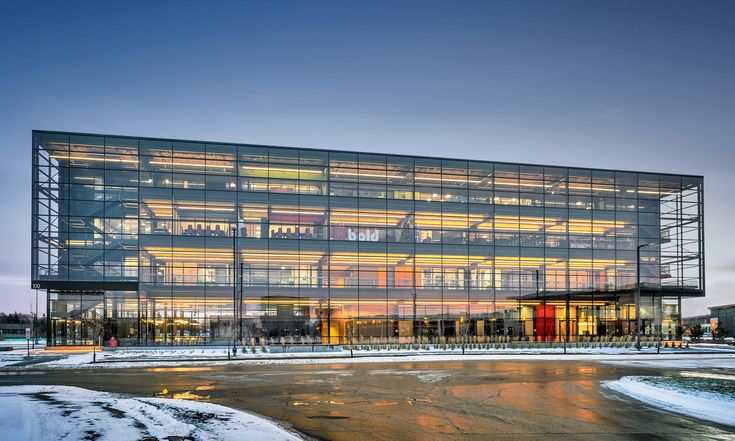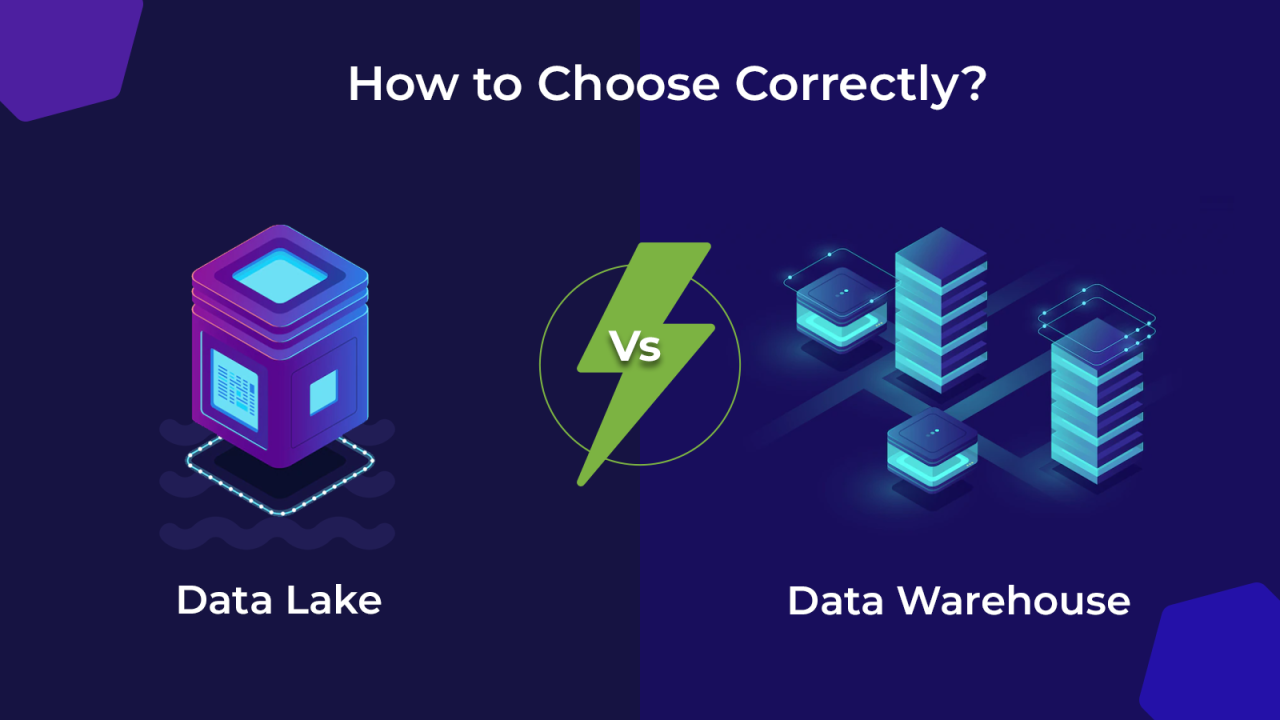In the ceaselessly accelerating currents of the 21st-century global landscape, few phenomena possess the transformative power and universal influence as profoundly as ubiquitous connectivity. Far transcending mere internet access, it embodies the frictionless flow of information, groundbreaking ideas, and dynamic commerce across all geographical and societal divides, underpinned by an intricately woven tapestry of digital infrastructure. This omnipresent connectivity functions as the fundamental catalyst, directly propelling economic expansion, nurturing relentless innovation, bridging long-standing societal divides, and fundamentally reshaping the very fabric of national interactions and industrial operations. It is the silent, yet incredibly potent, engine that allows groundbreaking ideas to proliferate globally, empowers businesses to achieve unprecedented scale, and enables individuals to seize unparalleled opportunities, unequivocally driving global growth and ceaseless innovation on an unmatched scale.
The Unfolding Story of Connectivity: From Signals to Seamlessness
To truly grasp the profound and multifaceted significance of modern connectivity, it’s essential to embark on a journey through its rich historical evolution. Each monumental leap in communication technology has not merely shrunk the world but has dynamically accelerated economic activity and human progress.
A. The Earliest Threads: Limited Long-Distance Communication
Humanity’s initial forays into communicating across vast distances were, by modern standards, rudimentary. They relied heavily on physical transport or rudimentary visual and auditory signals.
- Primitive Signaling Methods: Early methods like smoke signals, drum beats, and pre-arranged visual cues provided highly constrained, line-of-sight, or point-to-point communication. These were severely limited by factors such as distance, environmental conditions (like weather), and the inherent simplicity of the messages that could be conveyed.
- The Era of Physical Couriers: For more complex or physically manifested messages, reliance was placed on human or animal messengers, exemplified by systems like the Persian Empire’s relay posts or the American Pony Express. Ocean voyages, carrying dispatches and goods, faced even greater temporal constraints. Weeks or even months could elapse for crucial information to traverse continents or oceans, dramatically hindering the pace of commerce and diplomatic coordination.
- Fundamental Limitations: Critically, these early communication paradigms were inherently slow, often unreliable, and capable of transmitting only a very limited quantum of information. This rendered rapid global commerce, sophisticated financial transactions, or real-time international collaboration utterly inconceivable.
B. The Spark of Electrical Communication: A New Epoch Begins
The 19th century heralded a revolutionary era with the harnessing of electricity for communication, marking the first true exponential leap in information transmission speed.
- The Telegraph’s Breakthrough: Samuel Morse’s invention of the telegraph allowed for messages to be transmitted almost instantaneously over vast distances, utilizing electrical signals encoded in Morse code. This was a veritable game-changer for critical sectors such as news dissemination, financial markets, and military intelligence. It monumentally compressed the time required for information to cross national and continental boundaries.
- Submarine Cable Networks: The audacious feat of laying transatlantic telegraph cables in the mid-19th century birthed the planet’s first genuinely global communication network. This directly catalyzed the expansion of international trade and financial markets by enabling near real-time communication between previously isolated continents, fundamentally altering the speed of global commerce.
- Lingering Constraints: Despite its revolutionary speed, the telegraph remained a costly medium, limited primarily to text-based messages, and demanded specialized, extensive infrastructure alongside highly trained operators. Consequently, it remained largely inaccessible to the average citizen or smaller enterprises.
C. The Vocal and Visual Revolutions: Telephony and Broadcasting**
The late 19th and early 20th centuries witnessed the advent of real-time voice communication and the powerful emergence of mass media, bringing new dimensions to global interaction.
- The Pervasive Telephone: Alexander Graham Bell’s invention of the telephone enabled synchronous, real-time voice communication, introducing a profound layer of personal and emotional interaction that the telegraph lacked. As telephone networks expanded, businesses gained the unprecedented ability to coordinate operations and make decisions more effectively across significant distances.
- The Influence of Radio Broadcasting: Radio ushered in the era of true mass communication, capable of disseminating news, entertainment, and vital information to vast, geographically dispersed audiences simultaneously. This powerful medium fostered unparalleled cultural exchange and played a pivotal role in standardizing information delivery and public discourse.
- The Visual Impact of Television: By adding dynamic visuals to broadcasting, television further revolutionized mass communication. Its impact permeated nearly every facet of society, from transforming advertising strategies to fundamentally altering political campaigns and public perception.
- Persistent Limitations: Despite these advances, telephony remained primarily a point-to-point service, and international calls were prohibitively expensive. Broadcasting, by its nature, was a one-way medium, lacking interactivity, and its content was largely controlled by a limited number of central entities, restricting diverse voices.
D. The Digital Dawn: The Internet and Ubiquitous Access
The late 20th century bore witness to the most profound technological transformation, propelling communication into a ubiquitous, intensely interactive, and fundamentally digital phenomenon.
- Personal Computers and Networking Foundations: The exponential proliferation of personal computers, coupled with the development of local area networks (LANs), meticulously laid the foundational groundwork for deeply interconnected digital systems.
- The Internet’s Birth: The true genesis of the internet irrevocably altered global connectivity. It provided a universal, open, and decentralized platform for information exchange, initially text-based, but rapidly evolving to seamlessly incorporate rich multimedia. This monumental invention was the very catalyst for the unprecedented globalization that defines our contemporary world.
- The World Wide Web’s Democratization: Tim Berners-Lee’s invention of the World Wide Web layered an intuitive, easy-to-use graphical interface atop the internet, rendering it widely accessible to a non-technical audience. This pivotal development unlocked the internet’s potential for mass adoption.
- Broadband and Mobile Ubiquity: The widespread adoption of high-speed broadband internet, coupled with the exponential growth of mobile networks (2G, 3G, 4G, and the burgeoning 5G), transcended desktop computing, embedding connectivity directly into our pockets and making it omnipresent and perpetually active.
- Information Democratization and Peer-to-Peer Networks: The internet unequivocally democratized access to information and enabled truly peer-to-peer communication on a global scale. This dismantled traditional gatekeepers of knowledge and power, fostering unprecedented levels of citizen participation and grassroots movements.
Each successive stage of this profound evolutionary journey built incrementally upon its predecessor, progressively dismantling barriers, compressing distances, and relentlessly fueling economic integration and innovation, setting the indelible stage for the transformative impact of modern digital connectivity.
The Foundational Pillars of Modern Global Connectivity
Today’s intricate web of global connectivity is meticulously constructed upon a complex interplay of sophisticated physical infrastructure, cutting-edge digital technologies, and meticulously crafted strategic policies. A comprehensive understanding of these interconnected pillars is paramount to fully recognizing and leveraging its immense economic power and capacity for innovation.
A. The Indispensable Internet Infrastructure
The very bedrock of global connectivity is the vast, continuously expanding, and increasingly sophisticated internet infrastructure.
- Fiber Optic Superhighways: Thousands upon thousands of kilometers of state-of-the-art undersea and terrestrial fiber optic cables constitute the high-capacity superhighways for digital data. These conduits transmit information at speeds approaching the speed of light across continents and beneath oceans. They are, in essence, the critical physical arteries through which the lifeblood of the global digital economy flows.
- Globally Distributed Data Centers: These massive, hyper-secure facilities house the colossal arrays of servers, vast storage systems, and intricate networking equipment fundamentally necessary to power the internet, enable scalable cloud computing, and deliver ubiquitous digital services. Their strategic geographical distribution and intricate interconnectedness are absolutely crucial for ensuring global reach, delivering ultra-low latency, and maintaining continuous service availability.
- Internet Exchange Points (IXPs): Serving as critical physical nexus points, IXPs are where diverse Internet Service Providers (ISPs), powerful content delivery networks (CDNs), and large digital enterprises directly exchange internet traffic. IXPs are pivotal for both significantly reducing the costs of data transmission and dramatically improving the overall efficiency and speed of internet communication across various networks.
- The Promise of Satellite Internet: Groundbreaking emerging technologies, particularly constellations of Low Earth Orbit (LEO) satellites (such as Starlink and OneWeb), hold the transformative promise of delivering high-speed broadband internet access to previously remote, rural, and underserved areas globally. This innovation is meticulously designed to bridge the last remaining digital access gaps, extending connectivity to populations and regions that were previously beyond terrestrial reach.
B. The Dynamic Realm of Wireless and Mobile Networks
Mobile connectivity has unequivocally made internet access ubiquitous, fundamentally reshaping both personal interaction and business operations.
- The Pervasiveness of 4G/LTE: The widespread deployment of 4G/LTE networks provided the foundational speed and robust capacity for the massive adoption of mobile internet usage. This effectively elevated smartphones to the status of primary computing and communication devices for billions of individuals worldwide, revolutionizing how we access information and services.
- The Dawn of 5G and Beyond: The latest generation, 5G, is not merely an incremental upgrade. It offers profoundly higher speeds, ultra-low latency, and an unprecedented massive connection density. These advanced capabilities are enabling a new wave of applications, including the vast Internet of Things (IoT), fully autonomous vehicles, and vastly enhanced mobile broadband experiences, which in turn are poised to further accelerate global economic activity and innovation.
- Local Area Wireless (Wi-Fi): Essential for high-speed, localized internet access, Wi-Fi continues to be the dominant standard for connectivity in homes, offices, and public spaces. It serves as a vital complement to cellular networks, providing high-bandwidth access for stationary or indoor environments.
C. The Symbiosis of Cloud and Edge Computing
These powerful computing paradigms are not only intrinsically linked to global connectivity but also serve as its most potent enablers, profoundly amplifying its economic impact.
- The Elasticity of Cloud Computing: By hosting applications, services, and vast datasets in globally distributed, hyper-scalable data centers, cloud computing empowers businesses to scale their operations rapidly and with unprecedented agility. It provides on-demand access to immense computing resources, enabling companies to serve customers worldwide without the prohibitive capital expenditure and operational complexities of building and maintaining their own extensive physical IT infrastructure. This effectively democratizes access to high-end IT capabilities.
- The Speed of Edge Computing: Driven by the growing imperative for real-time data processing and the critical need for ultra-low latency (particularly for applications like IoT, real-time AI inference, and autonomous systems), computation is increasingly being pushed closer to the data source—at the ‘edge’ of the network. This ‘edge’ paradigm strategically complements centralized cloud computing by optimizing data flow, reducing network congestion, and enabling instantaneous decision-making in highly distributed and time-sensitive environments.
D. The Transformative Software and Application Layer
Beyond the foundational physical infrastructure, it is the sophisticated software and innovative applications meticulously built upon this interconnected network that truly translate raw connectivity into tangible, measurable economic value and societal progress.
- Global E-commerce Platforms: The proliferation of advanced websites and intuitive mobile applications that facilitate the seamless online buying and selling of goods and services on a truly global scale. These platforms effectively dissolve traditional geographical trade barriers, opening up unprecedented market access for businesses of all sizes and consumers worldwide.
- Ubiquitous Collaboration Tools: A diverse suite of software solutions for remote work, high-fidelity video conferencing, agile project management, and collaborative document editing empowers geographically dispersed teams to work together seamlessly and productively. This fosters the growth of global talent pools, accelerates innovation, and dramatically increases overall productivity.
- Revolutionary Fintech Solutions: The continuous innovation in digital payment systems, secure online banking platforms, and groundbreaking blockchain-based financial services facilitates faster, more cost-effective, and inherently more secure financial transactions across international borders. These advancements are absolutely essential for driving international trade, cross-border investment, and fostering financial inclusion on a global scale.
- AI and Big Data Analytics Engines: The vast, continuous stream of data generated by ubiquitous connectivity provides the raw, invaluable input for advanced Artificial Intelligence (AI) and Big Data analytics engines. These powerful analytical capabilities, in turn, drive unprecedented levels of efficiency, spark novel innovations, and enable the creation of entirely new, data-driven business models across virtually all economic sectors, from healthcare to manufacturing.
These interconnected pillars do not operate in isolation; rather, they form a robust and dynamic ecosystem that collectively fuels unprecedented levels of global economic activity, fosters deep international interaction, and continuously propels human advancement.
The Unstoppable Force: How Connectivity Directly Fuels Global Economic Growth
The pervasive and ever-deepening nature of modern connectivity translates into a cascade of powerful economic benefits that profoundly ripple across industries, transform nations, and uplift individual lives. It’s a fundamental force for prosperity.
A. Democratizing Market Access and Opportunity
Connectivity fundamentally levels the global economic playing field, providing unprecedented access to markets and a wealth of opportunities that were once the exclusive domain of large corporations or established economies.
- Global Reach for SMEs: Small and Medium-sized Enterprises (SMEs), previously constrained by geographical limitations and prohibitive international trade costs, can now access and compete in global markets. Through accessible e-commerce platforms, affordable online marketing tools, and efficient digital logistics, they can bypass traditional barriers to international trade, such as the need for physical presence or complex distribution networks. This drastically expands their addressable market size and fuels their growth potential exponentially.
- New Export Avenues for Developing Nations: Countries with developing economies can leverage readily available digital platforms to export a diverse array of goods and services—ranging from traditional handicrafts and agricultural products to burgeoning digital services like freelancing, remote customer support, and IT outsourcing—to more affluent global markets. This crucial diversification strengthens their economies, generates vital foreign exchange, and creates entirely new revenue streams for their populations.
- Access to Global Talent Pools: Businesses are no longer confined by geographical proximity when seeking talent. They can now efficiently source and hire skilled professionals from anywhere in the world, leading to significant reductions in labor costs in many instances, facilitating access to highly specialized or niche skills, and fostering the development of diverse, globally distributed teams. This diversity often translates into increased innovation, fresh perspectives, and higher overall productivity.
- The Remote Work Revolution: The profound capability to work remotely, enabled by pervasive connectivity, is fundamentally reshaping global labor markets. It significantly reduces geographical constraints on employment, opening up opportunities for individuals in remote areas, and for many, demonstrably improving work-life balance and overall employee satisfaction.
B. Igniting Innovation and Accelerating Knowledge Sharing
The seamless and continuous flow of information and ideas across networks acts as a direct and potent catalyst for unprecedented levels of innovation.
- Accelerated Research and Development (R&D): Researchers, scientists, and engineers across the globe can collaborate in real-time on complex projects, instantly share vast datasets, and access immense online knowledge bases and sophisticated computational resources. This dramatically accelerates scientific discovery, technological innovation, and the pace at which solutions to global challenges (e.g., collaborative efforts on vaccine development during a pandemic) can be found.
- Unleashing Open Source Collaboration: The internet provides the perfect ecosystem for open-source collaboration. Developers worldwide can contribute to, test, and leverage open-source projects, collectively building sophisticated software tools, advanced platforms, and innovative solutions at a pace and scale that would be utterly impossible for isolated teams or proprietary development models.
- Democratizing Skill Development and Online Education: Individuals, irrespective of their physical location or socioeconomic background, can now access high-quality online courses, specialized tutorials, and industry-recognized certifications from leading educational institutions and experts globally. This mass accessibility profoundly upskills workforces, nurtures latent talent, and cultivates a more knowledgeable and capable global talent pool, fostering lifelong learning.
- Rapid Diffusion of Ideas: New business models, groundbreaking technological concepts, revolutionary design principles, and best operational practices can proliferate globally almost instantaneously. This fosters a highly dynamic, competitive, and fertile environment of continuous innovation, where ideas can be built upon and refined at an incredible pace.
C. Driving Unprecedented Efficiency and Productivity Across Sectors
Connectivity serves as the invisible thread that enables smarter, more streamlined, and inherently more efficient operations across virtually every conceivable industry.
- Optimized Global Supply Chains: Real-time data generated by interconnected devices (Internet of Things – IoT) allows for incredibly precise tracking of goods in transit, facilitates predictive maintenance of critical logistics equipment, and enables dynamic rerouting to circumvent delays or disruptions. This makes global supply chains not only vastly more efficient but also remarkably more resilient to unforeseen events.
- Advanced Process Automation (Industry 4.0): Connectivity is the foundational underpinning of the Fourth Industrial Revolution (Industry 4.0), enabling the creation of ‘smart factories’ where machines communicate autonomously, production processes are highly automated, and overall output is continuously optimized through real-time data analysis and AI-driven insights.
- Digital Payments and Financial Inclusion: Instant, low-cost, and secure digital payment systems bypass cumbersome traditional banking infrastructure. This not only facilitates financial transactions for previously unbanked populations in developing countries, driving profound financial inclusion, but also dramatically speeds up and reduces the cost of cross-border payments for businesses, acting as a powerful stimulant for international trade and investment.
- Transforming Agriculture (Precision Farming): Connected sensors, drones, and satellite imagery provide real-time, granular data on soil conditions, individual crop health, hydration levels, and localized weather patterns. This empowers farmers to make highly informed decisions, optimizing irrigation, precisely applying fertilization, and targeting pest control, leading to significantly increased yields, reduced waste, and more sustainable agricultural practices.
D. Streamlining Global Trade and Facilitating Investment
Connectivity directly lubricates the intricate machinery of international trade and capital flows, making them faster, cheaper, and more accessible.
- Reduced Transaction Costs: The pervasive availability of digital communication platforms, online marketplaces, and shared digital documents dramatically reduces the traditional costs associated with international trade, such as the laborious processes of finding trading partners, negotiating complex contracts, and handling voluminous physical documentation.
- Increased Market Transparency: Online platforms, real-time data feeds, and distributed ledger technologies can significantly increase transparency in international markets. This reduces information asymmetries between buyers and sellers, fosters greater trust among trading partners, and enables more informed decision-making.
- Facilitating Cross-Border Investment: Investors now have instant access to real-time market data, sophisticated analytical tools, and the ability to execute trades globally. This leads to more fluid and efficient capital flows across borders, driving foreign direct investment (FDI) into promising new markets and ventures.
- Deeper Global Market Integration: Connectivity fosters the profound integration of global financial markets, allowing for more efficient allocation of capital resources worldwide, enabling greater diversification for investors, and increasing market liquidity.
E. Bolstering Economic Resilience and Crisis Response Capabilities
In unpredictable times of crisis—be it pandemics, natural disasters, or economic downturns—robust and resilient connectivity proves to be an invaluable asset for maintaining economic stability and accelerating recovery.
- Ensuring Business Continuity: During widespread crises like global pandemics or localized natural disasters, strong internet connectivity becomes the lifeline for many enterprises. It enables widespread remote work, facilitates online operations, and allows businesses to pivot to digital sales channels, thereby significantly maintaining continuity and mitigating catastrophic economic disruption.
- Accelerated Disaster Response and Aid Coordination: Real-time communication networks and agile data-sharing platforms facilitate faster, more coordinated, and far more effective disaster relief efforts. This rapid response capability minimizes economic damage, accelerates recovery processes, and crucially, saves lives by ensuring aid reaches those who need it most.
- Market Adaptability and Pivot Capabilities: Businesses, empowered by connectivity, can swiftly adapt their models. They can pivot rapidly to online sales channels, virtual service delivery, or remote consulting when traditional avenues are disrupted. This agility, directly fueled by connectivity, showcases remarkable economic adaptability.
- Access to Critical Information during Crises: During any crisis, connectivity ensures that affected populations have immediate access to vital public health information, essential government directives, and critical emergency services. This widespread information access plays a crucial role in maintaining social stability and accelerating economic recovery.
Navigating the Hurdles: Challenges in Expanding Global Connectivity
Despite its undeniably immense benefits, the continuous expansion and optimal utilization of global connectivity face significant, multifaceted hurdles that demand concerted effort and strategic foresight to ensure truly equitable and sustainable growth for all.
A. The Enduring Digital Divide
Despite remarkable progress, a substantial segment of the global population still lacks reliable, affordable, and high-quality internet access. This persistent digital divide perpetuates existing inequalities and creates new ones.
- Persistent Infrastructure Gaps: Many rural and geographically remote areas, particularly in large developing countries, continue to lack the necessary foundational physical infrastructure (e.g., fiber optic cables, adequate cellular towers) due to the prohibitively high deployment costs and the often-low potential returns for private telecommunication companies.
- Affordability as a Barrier: Even in regions where some infrastructure exists, the recurring cost of internet services, the initial investment in appropriate digital devices, and even the availability of affordable electricity can be prohibitively expensive for low-income populations, rendering theoretical connectivity practically inaccessible.
- The Digital Literacy Gap: Beyond mere access, a significant challenge lies in the lack of digital literacy and foundational skills. A substantial portion of the population lacks the necessary knowledge or understanding of how to effectively use digital tools, navigate online information, or leverage the benefits of connectivity for personal or economic advancement, even if physical access is provided.
- Exacerbating Existing Inequalities: Without a concerted global effort to ensure equitable access and digital literacy, the digital divide threatens to widen the gap between those who actively benefit from the burgeoning connected economy and those who are systematically left behind, profoundly impacting access to education, employment opportunities, and overall social mobility.
B. The Menace of Cybersecurity Threats and Data Privacy Concerns
The inherently interconnected and decentralized nature of global digital networks inevitably creates significant vulnerabilities, posing a constant and evolving threat.
- Expansive Attack Surface: The proliferation of interconnected devices, increasingly complex systems, and widespread reliance on digital platforms means a vastly expanded attack surface for sophisticated cybercriminals, nefarious state-sponsored actors, and other malicious entities. Each new connection point represents a potential entry for exploitation.
- Escalating Sophistication of Attacks: Threats like devastating ransomware attacks, cunning phishing schemes, massive data breaches, and pervasive state-sponsored cyber warfare are becoming increasingly sophisticated. These pose existential threats to businesses, critical national infrastructure, and national security, inflicting immense economic damage and widespread disruption.
- Profound Data Privacy Concerns: The sheer, ever-increasing volume of data collected, processed, and transmitted across global networks raises profound concerns about individual privacy, the potential for corporate espionage, and the widespread misuse of sensitive personal and proprietary information. This necessitates the continuous development and rigorous enforcement of robust regulatory frameworks like GDPR and CCPA.
- Erosion of Trust in Digital Systems: A succession of high-profile cybersecurity incidents and data breaches can systematically erode public trust in the reliability and security of digital systems. This erosion can significantly hinder the widespread adoption of new technologies, slow down digital transformation initiatives, and ultimately impede overall economic progress.
C. The Friction of Geopolitical Tensions and Digital Sovereignty
Paradoxically, while connectivity enables unparalleled collaboration, it also serves as a potent vector for intensifying geopolitical competition and strategic rivalry among nations.
- Internet Fragmentation (The ‘Splinternet’): Growing nationalistic tendencies, coupled with heightened national security concerns, are actively driving some countries to seek greater control and autonomy over their domestic internet infrastructure, national data flows, and proprietary digital services. This trend, if unchecked, could lead to a fragmented global internet, often referred to as a ‘splinternet,’ where connectivity is compartmentalized.
- Escalation of Cyber Espionage and Warfare: Nations increasingly engage in sophisticated cyber espionage to gain economic advantage, steal intellectual property, and develop potent cyber warfare capabilities. Connectivity effectively becomes a pervasive battleground for strategic influence and disruption, with ongoing attacks targeting critical infrastructure and sensitive government systems.
- Critical Supply Chain Dependencies: The pervasive reliance on foreign suppliers for crucial digital infrastructure components (e.g., advanced semiconductors, specialized networking equipment) creates significant geopolitical vulnerabilities. This dependency is actively driving efforts towards supply chain de-risking, national resilience strategies, and accelerated reshoring of critical manufacturing capabilities.
- Censorship and Information Control: Authoritarian regimes systematically exploit connectivity to exert pervasive control over information flows, suppress dissent, and extensively monitor their citizens. This practice raises grave human rights concerns and fundamentally impacts the free exchange of ideas and the principles of open trade.
D. The Complexity of Regulatory Harmonization and Governance Gaps
The inherently global and borderless nature of digital connectivity often outpaces the development and adaptation of national regulatory frameworks, creating a complex web of compliance challenges.
- Conflicting National Regulations: Different countries continue to adopt widely varying and often conflicting regulations concerning data privacy, e-commerce transactions, content moderation standards, and digital taxation. This regulatory patchwork creates immense operational complexities and compliance burdens for businesses operating globally.
- Absence of Global Governance: Crucially, there is no single, universally accepted, and empowered global governance body for the internet. This absence leads to fragmented efforts in addressing pressing cross-border issues such as cybercrime, international content disputes, digital taxation regimes, and the ethical use of artificial intelligence.
- Antitrust and Monopoly Concerns: The increasing market dominance and vast influence of a few colossal technology companies in the digital space raise serious concerns about potential monopolies, anti-competitive practices, and the urgent need for robust international antitrust coordination and regulation to ensure fair competition and protect consumer interests.
E. The Unseen Environmental Footprint of Digital Infrastructure
The sheer scale and rapid expansion of global digital infrastructure, while enabling profound benefits, undeniably come with a significant and growing environmental footprint.
- Immense Energy Consumption: The operation of vast data centers, continuously running servers, and ubiquitous network equipment consumes immense amounts of electricity. This consumption contributes substantially to global carbon emissions, particularly if these facilities are powered predominantly by non-renewable energy sources.
- The Challenge of E-Waste: The rapid upgrade cycles inherent in electronic devices and digital infrastructure generate colossal volumes of electronic waste (e-waste). This waste often contains hazardous materials that pose severe environmental and public health challenges if not properly recycled or disposed of.
- Resource Depletion: The manufacturing processes for digital devices and network infrastructure components demand significant amounts of finite natural resources, including rare earth minerals and various other raw materials. This raises serious long-term concerns about their sustainable extraction and the security of their global supply chains.
Charting the Course: The Future Trajectory of Global Connectivity
Despite the formidable challenges that lie ahead, the trajectory for global connectivity is unequivocally towards even greater reach, exponentially higher speeds, and profoundly deeper integration. This progression is consistently driven by an insatiable human quest for both economic growth and enduring societal progress.
A. The Drive Towards Universal Broadband Access (Satellite & Public-Private Partnerships)
The global imperative to decisively close the persistent digital divide will only accelerate, fueling concerted efforts towards achieving universal, equitable broadband access for every corner of the planet.
- Revolutionary LEO Satellite Constellations: As previously highlighted, constellations of Low Earth Orbit (LEO) satellites, such as Starlink, OneWeb, and others, are poised to provide truly global internet access. Their unique advantage lies in their ability to reach remote and rural areas where terrestrial infrastructure deployment is either prohibitively costly or geographically unfeasible.
- Strategic Public-Private Partnerships: Governments and private telecommunication companies will increasingly forge powerful collaborations to jointly fund and rapidly deploy critical infrastructure in underserved regions. This often involves innovative financing models, leveraging government subsidies, providing regulatory incentives, and exploring cutting-edge deployment techniques to bridge connectivity gaps effectively.
- Proactive Affordability Initiatives: A growing global emphasis will be placed on implementing comprehensive programs designed to reduce the cost of digital devices, establish widespread public Wi-Fi hotspots, and offer subsidized internet access for low-income households. These initiatives are crucial for transforming mere access into genuine affordability and usability.
B. Fortifying Connectivity: Enhanced Cybersecurity and Trust Frameworks
As global connectivity deepens and becomes ever more pervasive, the strategic focus on securing it will intensify exponentially, becoming a paramount concern for nations and corporations alike.
- AI-Powered Predictive Security: Artificial Intelligence (AI) and advanced Machine Learning (ML) will be increasingly deployed for real-time threat detection, sophisticated anomaly identification, and automated response mechanisms to cyberattacks. This paradigm shift will move security defenses towards highly proactive and self-adapting capabilities.
- Widespread Zero-Trust Architectures: The widespread adoption of ‘zero-trust’ security models will become a standard. This approach fundamentally assumes no inherent trust, even within internal networks, and rigorously requires strict verification and authorization for every access request, dramatically bolstering overall security posture.
- Accelerated International Cooperation: Governments, international organizations, and leading private sector entities will significantly enhance their collaboration on critical cybersecurity initiatives. This includes improved information sharing, robust threat intelligence exchanges, and coordinated international responses to address the growing menace of global cybercrime and state-sponsored attacks.
- Empowering Decentralized Identity and Privacy Tools: The continuous development and widespread adoption of blockchain-based decentralized identity solutions and advanced privacy-enhancing technologies will empower individuals with greater autonomy and control over their personal data, fundamentally reshaping digital privacy.
C. The Immersive Frontier: The Metaverse and Next-Gen Connectivity
The imminent emergence and gradual realization of the Metaverse will fundamentally push the very boundaries of connectivity, demanding exponentially higher bandwidth, ultra-low latency, and unprecedented computational power.
- Persistent, Interconnected Virtual Worlds: The creation and maintenance of persistent, highly realistic, and interconnected 3D virtual worlds will necessitate massive computational power and real-time data synchronization across globally distributed user bases, requiring networks capable of handling immense, synchronous data flows.
- Next-Gen Augmented and Virtual Reality: The widespread adoption of increasingly sophisticated AR/VR devices will demand extremely low-latency networks. This is crucial for delivering seamless, truly immersive experiences without inducing motion sickness or cognitive dissonance, making virtual interactions feel as real as possible.
- Catalyst for New Economic Opportunities: The metaverse holds the transformative promise of unlocking entirely new avenues for commerce, entertainment, education, and remote work. This will give rise to entirely new industries, novel business models, and unprecedented economic activities that are intrinsically dependent on highly sophisticated and hyper-responsive connectivity.
D. The Imperative for Sustainable Digital Infrastructure
Growing global environmental concerns will increasingly drive a concerted focus on designing, deploying, and operating sustainable digital infrastructure that minimizes ecological impact.
- Green Data Centers and Renewable Energy: There will be a massive increase in investment in designing and building highly energy-efficient data centers that utilize advanced cooling technologies and are predominantly powered by renewable energy sources (solar, wind, geothermal) to reduce their carbon footprint dramatically.
- Circular Economy for Electronics: Initiatives promoting the recycling, extensive reuse, and meticulous repair of electronic devices and critical network equipment will gain significant traction. This aims to dramatically reduce the burgeoning volume of electronic waste (e-waste) and alleviate the depletion of finite natural resources.
- Energy-Efficient Protocols and Devices: Continuous research and development will focus on creating more energy-efficient networking protocols, designing lower-power consumption digital devices, and optimizing software algorithms to reduce the overall energy footprint of the entire internet ecosystem.
E. Digital Public Goods and Enhanced Open-Source Collaboration
There will be a growing global emphasis on viewing fundamental connectivity and core digital infrastructure as essential public goods, necessary for equitable societal progress.
- Open Source Hardware and Software for Connectivity: Increased investment and collaborative efforts in open-source projects for critical networking equipment, foundational operating systems, and core internet protocols will gain prominence. This fosters greater transparency, enhances security through collaborative vetting, and promotes more equitable global access to foundational digital technologies.
- Proactive Digital Inclusion Policies: Governments, international organizations, and non-profit entities will intensify the implementation of policies specifically aimed at ensuring truly equitable access to connectivity, fostering widespread digital literacy, and ensuring that the transformative benefits of the digital economy are widely distributed across all segments of society, leaving no one behind.
F. Hyper-Connected Industries: The Dawn of Industry 5.0**
Building upon the automation breakthroughs of Industry 4.0, Industry 5.0 will signify a profound shift towards seamless human-robot collaboration, hyper-personalization of mass production, and enhanced resilience—all intrinsically enabled by pervasive, intelligent connectivity.
- True Human-Robot Collaboration: Ultra-responsive, low-latency networks will enable robots and human workers to collaborate seamlessly, intuitively, and safely side-by-side on factory floors, in logistics hubs, and beyond. This collaboration will augment human capabilities and optimize complex tasks.
- Personalized and Agile Manufacturing: Real-time customer data, transmitted and analyzed via high-speed, intelligent networks, will enable highly flexible, on-demand, and extensively customized production at scale, directly responding to individual consumer preferences with unprecedented agility.
- Intelligent and Resilient Supply Chains: The future will see end-to-end digital visibility and AI-powered automated decision-making across complex global supply chains. This will create unparalleled levels of efficiency, responsiveness, and resilience, allowing supply chains to self-optimize and adapt to disruptions in real-time.
Conclusion
In the grand and dynamic narrative of global progress, connectivity unequivocally stands as a paramount force, ceaselessly fueling global growth. From the nascent, rudimentary signals of antiquity to the instantaneous terabits of data traversing vast fiber optic networks today, each successive technological leap has profoundly compressed the dimensions of time and space. This relentless compression has enabled unprecedented levels of economic activity, fostered profound cultural exchange, and facilitated unparalleled human collaboration on a global scale. Today, pervasive digital connectivity is the invisible yet utterly indispensable infrastructure that democratizes access to markets, tirelessly accelerates innovation, dramatically enhances productivity across virtually every economic sector, and fosters a more deeply integrated and interdependent global economy.
While the journey towards truly universal, equitable, and secure connectivity is fraught with significant and multifaceted challenges—including the persistent digital divide, escalating cybersecurity threats, and the intricate complexities of geopolitical tensions—the overriding imperative for a more connected world remains undeniable. The future trajectory promises not only universal broadband access facilitated by groundbreaking satellite constellations, but also hyper-secure digital ecosystems powered by advanced AI, immersive experiences within the burgeoning metaverse, and a conscious, deliberate drive towards inherently sustainable digital infrastructure. As nations, industries, and individuals navigate these rapidly evolving currents, strategic investments in robust, equitable, and secure connectivity will transcend mere economic choices; they will constitute the definitive blueprint for achieving inclusive prosperity, continuous innovation, and a truly interconnected global future. The profound power of connectivity to unleash boundless human and economic potential is not merely a distant promise; it is being actively unveiled and leveraged, with transformative impact, right now.













